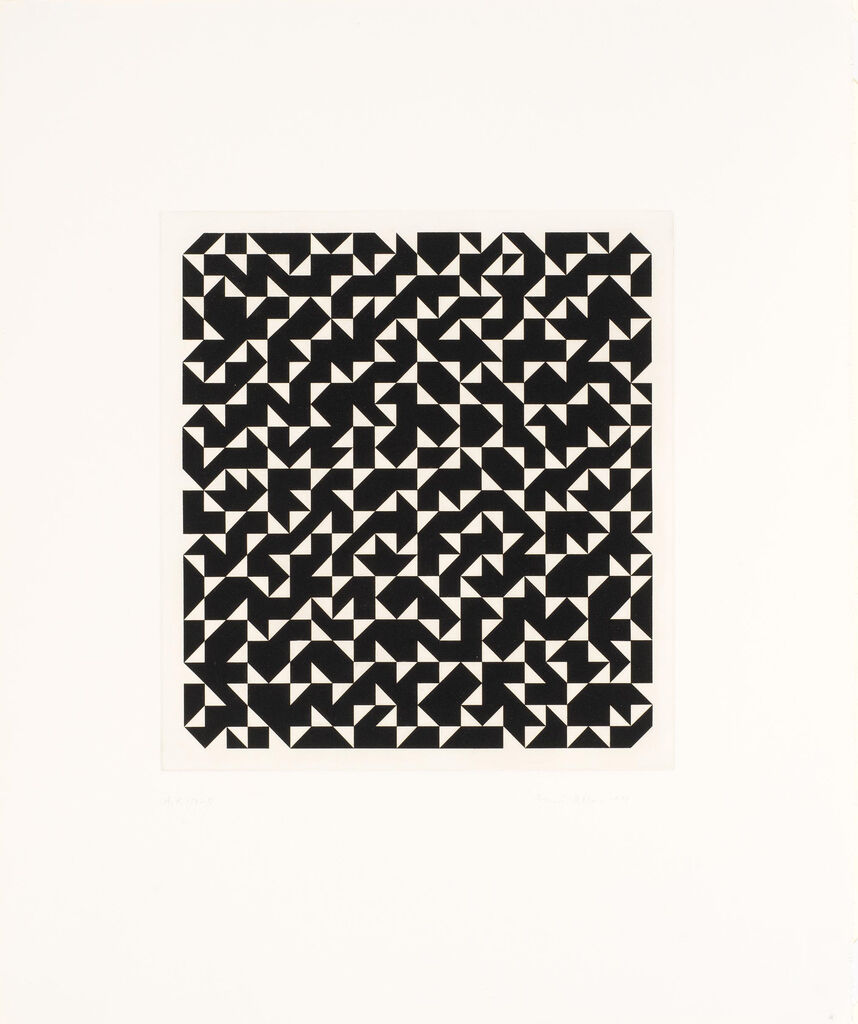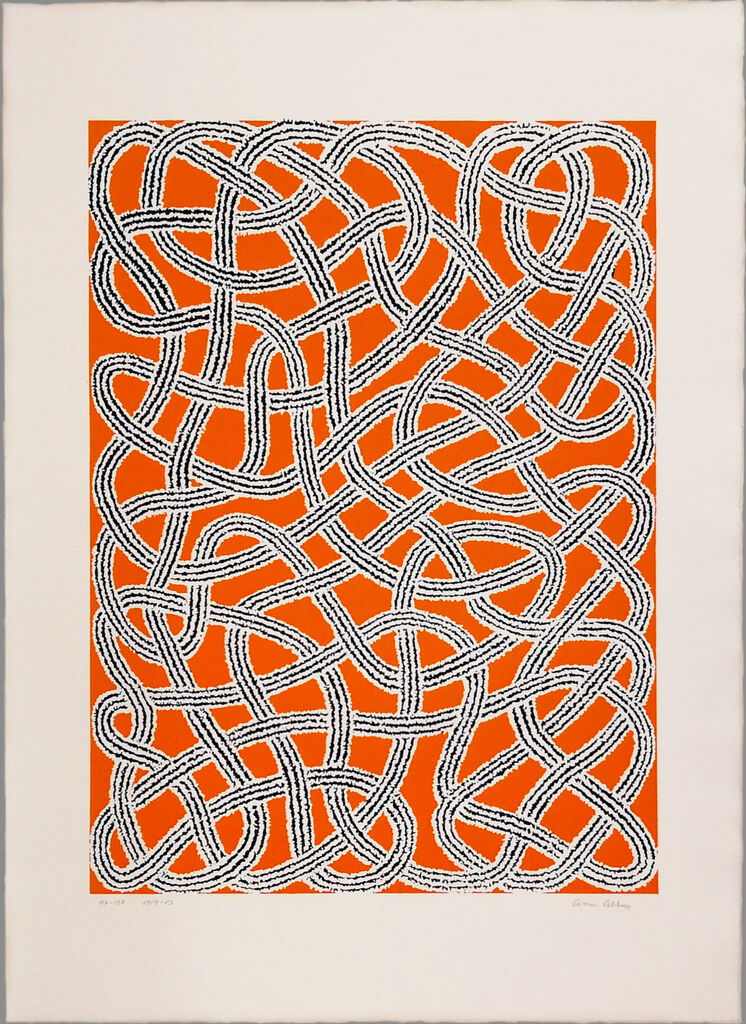DON’T SUBSCRIBE THE TREND
Anni and Josef had immense conviction in their practices and way of life, and were never swayed by the changing trends of the art world. Weber advised that collectors would do well to follow their lead by acquiring works that they feel a strong connection with, rather than basing their collecting decisions on what is trending at the moment.
“Both artists were very driven by the idea of experimentation and material diversity,” said Laib. He advised that while the couple’s paintings and weavings are quite well known and revered, collectors should also look to their drawings and editioned prints.
Cleaton-Roberts explained that both artists “have become synonymous with particular images and so typically these ‘signature’ works command higher prices.” While the artist’s earlier and rarer works typically garner intense competition (the couple’s historically significant works from their Bauhaus period are nearly impossible to acquire), both artists made many significant and important bodies of original editioned prints which just as well showcase their beliefs and technical skill. “In the case of both artists, what they achieved in their best prints could not have been realized in any other medium,” said Cleaton-Roberts.
STUDY THE MARKET
The respective markets for the Alberses’ work are distinct, namely because Josef’s body of work is broader and more widely available than Anni’s. Josef created several different iterations of his seminal works such as his iconic “Homage to the Square” series, in which he explored how various juxtapositions of color and form impact the viewer’s perceptions and emotions.
Because his body of work is so extensive, John McCord, co-head of day sales of 20th-century and contemporary art at Phillips, advised that collectors take their time and pay close attention to what comes up for sale. “You don’t need to jump at the first one that comes up,” he said. “You can think about what is interesting to you in terms of color and composition in the series because you do have choices.”
McCord said that “there are so many important works by Josef.” He cited the artist’s “Variants” (1947–1952) and “Formulation Articulation” (1972) print series as being “generally quite affordable, and incredibly expansive.”
While the market has historically gravitated around Josef, in recent years, demand for Anni’s works has also risen significantly. “With the growing recognition of their achievements and influence as artists, writers, and teachers, there has been a resurgence of market interest in both artists’ work,” said Cleaton-Roberts. “Whilst there has been a significant amount of attention on Josef for many years, more recently Anni’s work has undergone a necessary and much deserved reappraisal.”
Part of what has made Anni’s market presence somewhat lesser known is that original and early works—particularly her weavings and wall hangings—are very scarce and almost never sold, as most are housed in museums or have been lost to time. However, Anni’s original prints and drawings do come to market, and many are quite affordable considering their quality.
“I would look very carefully at anything she did by hand,” said Weber. “Her works on paper are undervalued given how few of them there are and the quality of them.”
CHECK FOR QUALITY AND AUTHENTICITY
When acquiring an Albers work, Cleaton-Roberts advised that collectors “only buy from well-respected print dealers or galleries who are experts in their field and can provide clear information, provenance, and condition reports.”
The Josef and Anni Albers Foundation has a committee dedicated to reviewing submitted works for authenticity and produces a printed catalogue raisonné with detailed information about editions. “Anything that is at auction or sold by a gallery should have a definitive statement in writing that it will be in the catalogues raisonnés,” said Weber. If a work has not been cleared for authenticity, collectors should steer clear.
Cleaton-Roberts also recommended that collectors check the condition of the work in person, as “the condition is absolutely vital with Albers prints and damage will reduce their value significantly.” Specifically for the artists’ works on paper, he advised that collectors should always see the work out of frame, as many of the artists’ prints are made using fragile techniques which can be damaged easily if mishandled while framing or displayed.
TRUST YOUR INTUITION
Both avid collectors themselves, the Alberses were driven by passion and inspiration on an aesthetic and technical level, but also on an emotional and philosophical level. “Anni Albers loved the subject of collecting, because she felt that it was always possible to collect very well by buying the things that not everyone else was buying,” said Weber. “She and Josef amassed a fantastic collection of pre-Columbian textiles, figurines, all sorts of pottery, and so on for very little money” in their frequent and beloved travels to Mexico and South America.
He expressed that collectors would do very well in the long run by looking for works within each artist’s oeuvre that are lesser known and to have faith in their own judgement and to allow emotion to guide them, rather than the prospect of financial gain. In a sense, collectors ought to abide by the same exuberance and passion for art that Anni and Josef themselves were so relentlessly compelled by. “You will end up with a better investment in every sense of the word—an emotional investment, and something that will improve your life,” said Weber.
Jillian Billard
Source Artsy














